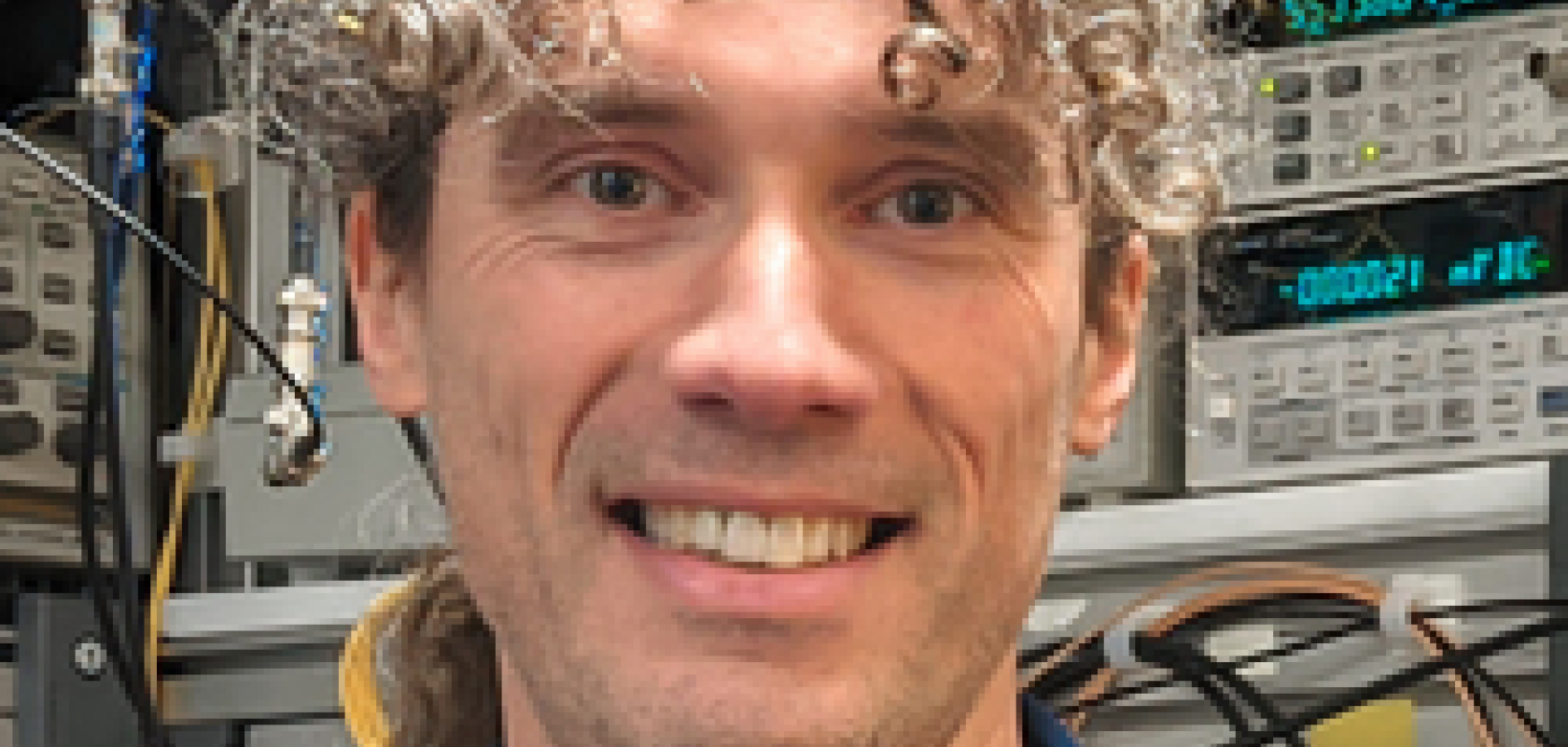Dr Giuseppe Marra is Principal Research Scientist at the National Physical Laboratory (NPL). His area of expertise is optical frequency metrology, with a focus on dissemination of ultra-stable optical frequencies over optical fibre links, including for comparison of distantly located optical atomic clocks.
Giuseppe joined NPL in 2002, and since then his work has included pioneering ultra-stable interferometric techniques over terrestrial and submarine cables for the detection of earthquakes and other environmental signals. This year, Giuseppe and his research team at NPL, alongside partner organisations, including researchers from the University of Edinburgh, the British Geological Survey, the Istituto Nazionale di Ricerca Metrologica (INRiM), and Google, successfully demonstrated a technique that can transform undersea power and telecom cables into arrays of environmental sensors.
The technique has the potential to revolutionise monitoring of the earth because it can allow scientists to acquire, for the first time, continuous, real-time environmental data from the bottom of seas and oceans. Giuseppe has also been working on the development of solutions to enable the comparison of optical atomic clocks over intercontinental distances using ocean floor optical cables.
The next big thing in Giuseppe’s area of photonics research is optical frequency metrology. He says: “I believe the next big thing in this area is the transfer of optical frequency metrology out of the laboratory, into the field. Until recently, optical clocks and ultra-stable optical references have been confined to specialised state-of-the-art laboratories, such as NPL. Following substantial advances in this science area over the last decade or so, our community is now able to take ultra-accurate and ultra-stable optical measurements out of the laboratory into the field, enabling exciting new opportunities for science and industry. The detection of earthquakes and other environmental signals using seafloor cables is one good example of how ultra-stable optical frequency metrology is enabling revolutionary possibilities for Earth monitoring on a global scale. I think we will see a growing number of these applications in the coming decade.”
An enthusiastic scientist, one of the biggest challenges Giuseppe faces is to resist the temptation of embarking himself into too many projects, even if they are extremely interesting. He reveals: “It’s a painful thing to do, as you might have many exciting ideas you want to explore. But developing each idea might take years of your professional career, so you need to strategically pick the best subset for you, your team and your science, and concentrate on those (but still keep an eye on the others). It’s a skilled art at which I like to think I have become better over the years!”
Giuseppe’s advice to anyone starting their career in photonics research is to think out of the box from day one. “Photonics has shown to be full of surprises and limits have been consistently overcome,” he explains. “It’s important that the limits are not in the mind before being in the lab. And to allow the passion for science to be the driver of whatever you do. Everything else will fall into place if passion is at the centre of it.”
When it comes to the biggest influences and the greatest help during his his career, Giuseppecites his colleagues at NPL, my many external collaborators, alongside: “whoever I had the pleasure to exchange ideas with over all these years - in particular, those who have challenged my ideas. It’s exactly in that moment that your career as a scientist has higher chances to progress. Never sit comfortably.”
With so many different research areas in photonics, Giuseppe praises all of the amazing scientists around the world that every day push the boundaries of photonics and optical frequency metrology. As to whom he sees as the R&D “rock stars” of the future, he says: “I think we’ll see a more important role of new generation optical fibres, such as hollow core fibre, in the generation of ultra-stable laser light and ultra-stable interferometry. I expect also to see optical frequency microcombs to become more available and engineered, enabling a range of interesting applications. Lastly, I think we will see a substantial growth of exciting experiments based on ultra-stable and accurate optical frequency metrology applied to optical fibre links, ranging from environmental sensing to fundamental physics tests.”
You can find Giuseppe on Twitter: @gmarraNPL and ResearchGate and, among other conferences, Giuseppe will give talks at OFC 2023 in San Diego, USA and SubOptic 2023 in Bangkok, Thailand. He says: “I am always happy to talk and meet other passionate scientists, so come and find me after my talks!”
Organisation: National Physical Laboratory (NPL)
Role: Principal Research Scientist
Based in: Teddington, UK
Education: PhD, Optoelectronics Research Centre, University of Southampton


